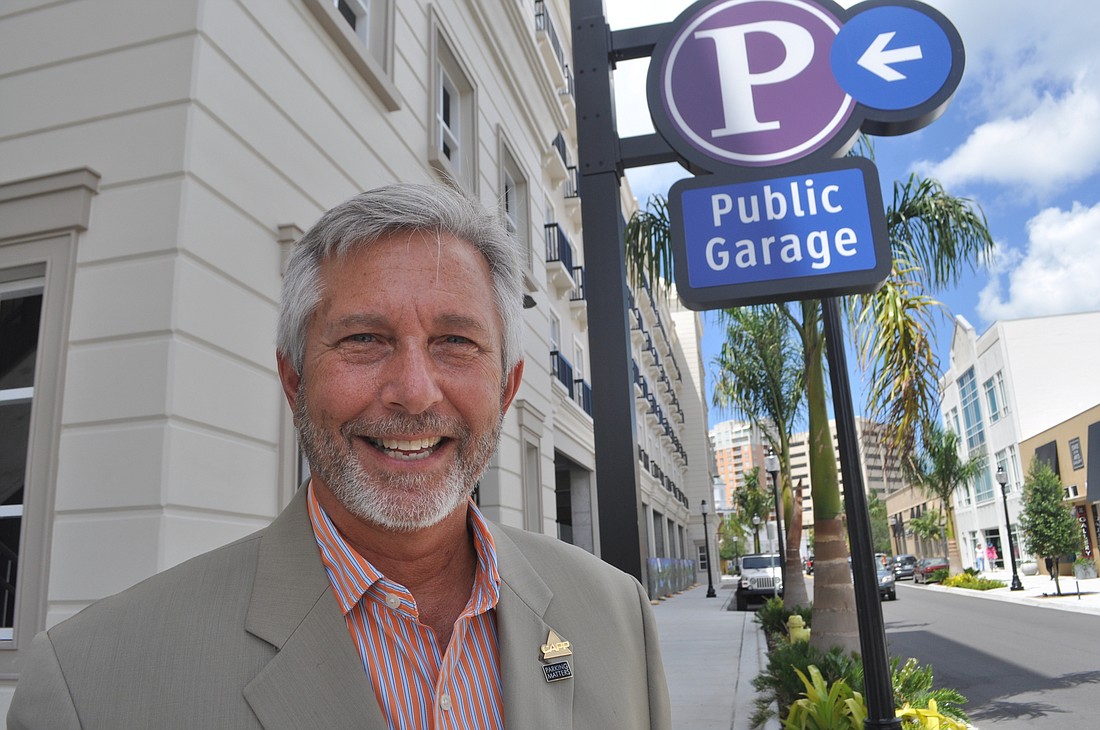- May 10, 2025
-
-
Loading

Loading

The members of the city’s Parking Advisory Committee are, by design, regular citizens from all corners of the city.
They work and live in segments of the city that are facing significant parking issues — places such as downtown, Southside Village and Lido Key. They’re active members of their community, which gives them the opportunity to engage with other business owners and residents who have their own thoughts about how the city should manage its parking spaces.
The members of the committee all support the implementation of paid parking in the city — so in that regard, they aren’t entirely representative of the general population. Still, the city hopes this group holds the key to successfully revamping Sarasota’s parking policies, avoiding the pitfalls of the past that led to citizen unrest regarding paid parking.
“Our approach is to involve the community and make sure there’s a multitude of different perspectives being considered when it comes to managing parking in the city,” said Mark Lyons, the city’s parking manager.
On May 23, the Parking Advisory Committee held its first meeting since 2014. The group is reconvening after the City Commission approved the Citywide Strategy for Parking Management, a 73-page report drafted based on input gathered from the PAC between 2012 and 2014.
That document addresses most big-picture questions about how the city can develop a sustainable parking program. It endorses the return of on-street paid parking, but it also outlines specific needs for eight districts with parking concerns that aren’t limited to the installation of meters on Main Street.
The reunion of PAC gives the group an opportunity to discuss the best way to actually implement the philosophies outlined in the strategy report. PAC Vice Chairman Carl Shoffstall is the president of the Lido Key Residents Association. Although much of the attention regarding parking meters has centered on commercial shopping districts, Shoffstall thinks paid parking could benefit the crowded areas of Lido Beach, too.
“My work takes me throughout the state of Florida and out into Georgia, and there’s very few places where there’s not paid parking out on the beach,” Shoffstall said. “A lot of the money that’s collected out there can go back into the beach area for landscaping and stuff like that.”
It’s unlikely that paid parking on Lido will be a primary focus as the city works to phase in parking meters, but the PAC offers a platform for Shoffstall to share his thoughts. It also gives him the opportunity to vet the idea with the community at large. Would other Lido residents be open to paid parking? That’s a question the city wants to know the answer to ahead of time.
“Once the committee has developed a plan and we take it to the commission for review, by that time, we should have had feedback from our committee members — who should have gone out to their constituents and brought back information from them,” Lyons said.
“I want to make sure we protect ourselves from ignoring some other perspectives.” — Mark Lyons
Lyons is working to recruit new members for the PAC, too. That’s partially because the group is missing representatives from areas such as St. Armands and the Rosemary District, but Lyons also wants to avoid creating a bubble around a group that’s spent years working toward consensus on parking issues.
“I think it’s important we bring in new ideas so that we continually explore doing the right thing and avoid just funneling the existing mindset in one direction,” Lyons said. “I do think we need to move forward, but I want to make sure we protect ourselves from ignoring some other perspectives.”
During the next six months, Lyons hopes the PAC will help create a specific list of suggestions for how the city can successfully implement parking policies with citizen support. At its next meeting, scheduled for June 14, the PAC will discuss the best locations for placing on-street meters, as well as the best way to phase in a paid parking program.
Committee member Eileen Hampshire, a Palm Avenue merchant, says one simple way to verify the efficacy of paid parking would involve installing a small number of meters in a busy segment of the city.
“You’d certainly be able to tell if there was turnover or not,” Hampshire said. “If those were the only four empty spots, that’d tell you something.”
The board members are aware of the failures of the 2011 effort to institute paid parking downtown. Both Lyons and the PAC are focused on learning from those failures. By undertaking a more community-driven approach to parking, the group believes the public resistance to paid parking will significantly decline, as well.
“That’s not going to happen again,” Hampshire said. “This is a much smarter, wiser, better researched effort.”